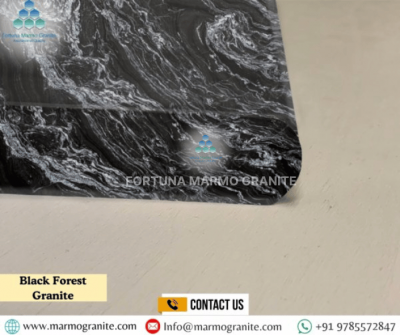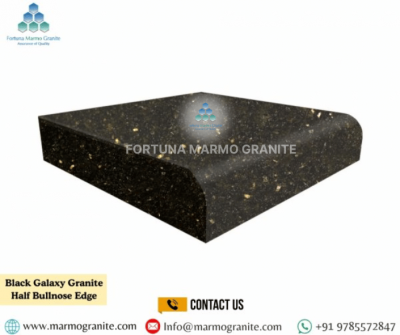Full Bullnose vs. Half Bullnose Granite Finish: Key Differences Explained
Granite is a highly sought-after material for countertops because of its durability, elegance, and timeless appeal. When selecting a granite finish, homeowners and designers should consider not only color and pattern but also the edge profile. Two popular options are full bullnose and half bullnose edges. Both add a sophisticated touch, but they differ in aesthetics, functionality, and maintenance. This blog explores the key differences between full bullnose and half bullnose granite finishes to help you make an informed choice.
Understanding Bullnose Edges
Bullnose edges are characterized by their rounded shape, offering a smooth and polished appearance. They are particularly popular in kitchens and bathrooms, as they provide a soft, refined look that enhances the overall design of the space. The primary distinction between full bullnose and half bullnose lies in how the edge is shaped and how it interacts with the granite slab's surface.
What is a Full Bullnose Edge?
A full bullnose edge is a popular granite profile known for its smooth, rounded shape that curves on both the top and bottom. This design gives countertops a soft, elegant look, perfect for kitchens, bathrooms, and outdoor areas. The continuous curve enhances safety by removing sharp edges, making it ideal for homes with children. Its rounded form also prevents chipping and lets water flow easily off the surface, reducing the risk of spills damaging the cabinetry below.
Advantages of Full Bullnose Granite Finish
- Enhanced Safety: The fully rounded edge eliminates sharp corners, making it ideal for households with children or elderly individuals.
- Timeless Aesthetic: The smooth curvature offers a classic and sophisticated appearance that complements both modern and traditional interiors.
- Easier Maintenance: Since there are no sharp angles, cleaning the edge is straightforward, as dust and debris do not accumulate in corners.
Disadvantages of Full Bullnose Granite Finish
- Water Spillage Issue: Since the bottom edge is also curved, water and spills can easily roll over the edge and onto cabinets or floors.
- Thickness Perception: A full bullnose edge can make the countertop appear thinner than it actually is, which may not be suitable for those desiring a bold, thick countertop look.
- Higher Cost: Due to the extensive polishing and shaping required, a full bullnose edge can be more expensive than other edge profiles.
What is a Half Bullnose Edge?
A half bullnose edge is a versatile granite profile with a rounded top and flat bottom. This design offers a sleek, modern look and a soft edge that improves safety and durability. The rounded top lets water flow smoothly off the surface, preventing spills from seeping into cabinetry. The flat bottom gives the stone a sturdy, structured finish that enhances its natural strength. This edge style also highlights the granite's thickness and beauty, making it ideal for kitchen countertops, bathroom vanities, and outdoor spaces. Combining elegance and functionality, the half bullnose edge remains a top choice for residential and commercial projects.
Advantages of Half Bullnose Granite Finish
Balanced Aesthetic: In contrast, The combination of a rounded top and a flat bottom creates a refined yet structured appearance that complements a wide range of design styles.
Reduced Water Spillage: Unlike a full bullnose edge, the half bullnose design prevents water from flowing directly beneath the countertop, thereby minimizing the risk of cabinet damage.
Illusion of Thickness: Consequently, Because only the top edge is rounded, the countertop maintains a bold and substantial look, making it an ideal choice for those seeking a strong and elegant visual effect.
Disadvantages of Half Bullnose Granite Finish
Slightly Sharper Edge: Moreover, While it is safer than square or beveled edges, the flat bottom portion can still pose a minor risk of impact injuries when compared to a full bullnose.
Dust Accumulation: In addition, Over time, the small transition area between the rounded top and flat bottom may collect dust or debris. Therefore, regular cleaning is recommended to maintain a polished look.
Comparing Full Bullnose vs. Half Bullnose: Which is Right for You?
- Aesthetic Preference
- If you prefer a completely smooth, rounded edge that offers a seamless and elegant look, a full bullnose is the better choice.
- If you want a modern yet refined appearance that maintains a structured form, a half bullnose might be more suitable.
2.Safety Concerns
- A full bullnose is ideal for households with young children or elderly individuals, as it eliminates any sharp edges.
- A half bullnose is still relatively safe but has a slightly sharper bottom edge that may not be as forgiving in case of impact.
3.Functionality and Maintenance
- Full bullnose edges may cause water to drip directly onto the floor or cabinetry, requiring extra caution in wet areas.
- Half bullnose edges help direct spills away from cabinets, making them a more practical choice for kitchens and bathrooms.
4.Budget Considerations
- Full bullnose edges require more intricate craftsmanship, making them slightly more expensive.
- Half bullnose edges, though elegant, require less labor, making them a more cost-effective alternative.
Conclusion
Both full bullnose and half bullnose granite edge profiles offer unique benefits to suit different design preferences and needs. A full bullnose edge features a smooth, continuous curve that creates a seamless and elegant look. A half bullnose edge combines a rounded top with a flat bottom, balancing beauty and practicality. Your choice depends on what you value most — safety, style, or better water runoff control.



